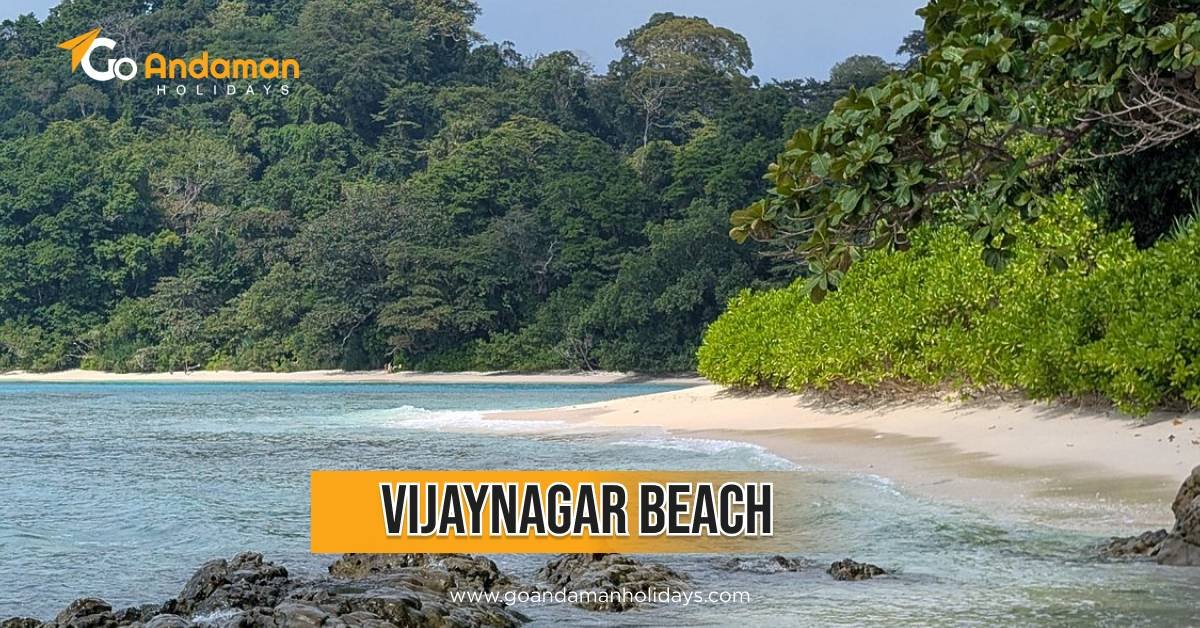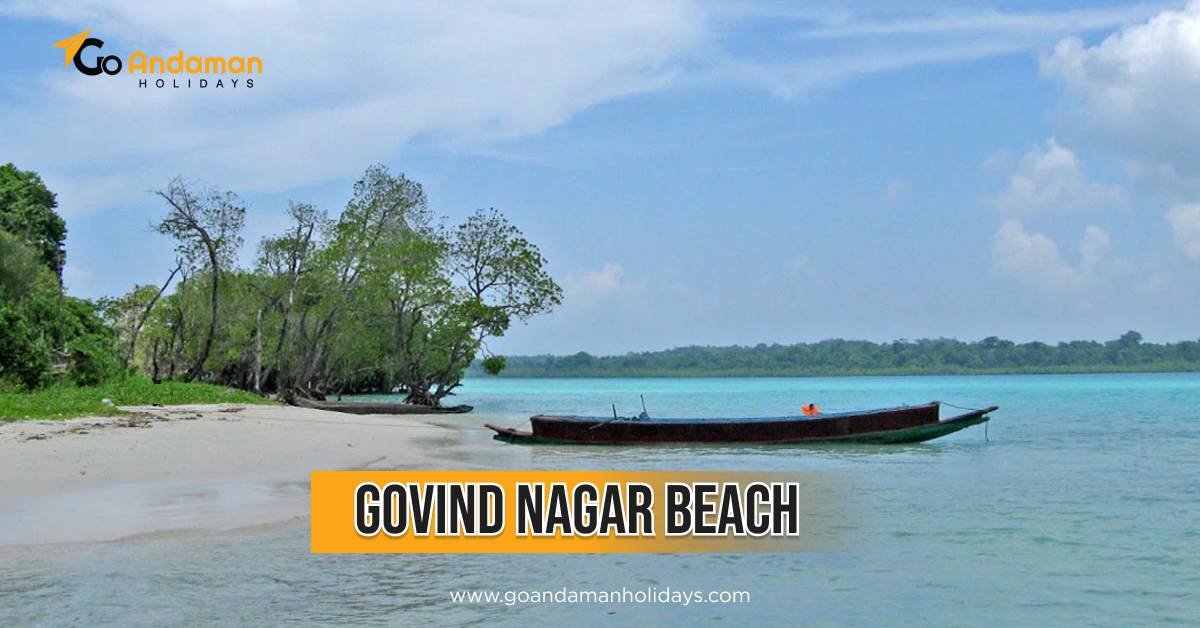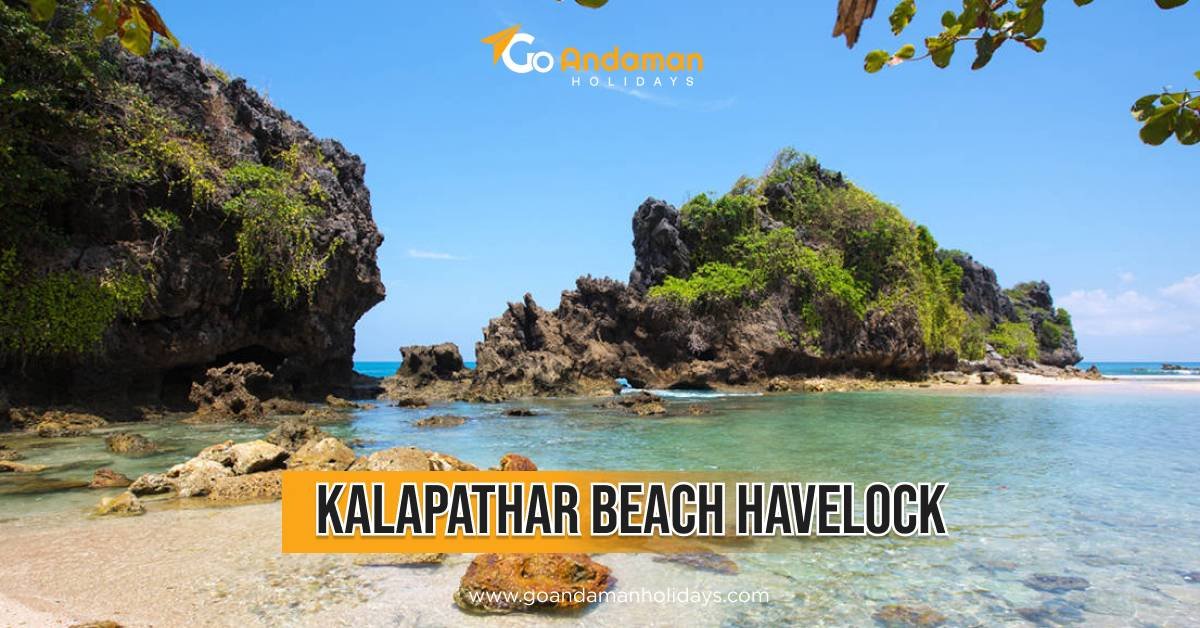
- Suresh Kumar
- 28-05-2025
- 0 Comments
Everything You Need to Know About Currency in Andaman & Nicobar Islands
Planning a trip to the island paradise of the Andaman & Nicobar Islands? You may have your mind set on blue seas, coral reefs, and palm-lined beaches, but there is a useful aspect you would not want to forego — money. From scuba diving lessons to souvenir shopping from roadside stalls, an understanding of money on the islands can make or break your vacation. In this article, we will take you through everything that you must know about Andaman Nicobar money, right from availability to use, exchange, ATM facility, digital payments, and saving money. You are covered whether you are an Indian tourist or an international visitor.
1. What is Andaman & Nicobar Islands?
Let's have this clarified straight away — Indian Rupee (INR) is the only and officially accepted Andaman Nicobar currency. There is no island money or foreign exchange reliance. All payments, be it luxury hotels in Havelock or ferry tickets in Port Blair, are in Indian Rupees.
Whether you're purchasing snacks from a street vendor or reserving a boat tour to Ross Island, INR is what you'll be spending. For foreign visitors, this means that you'll need to exchange your home currency into INR before you depart or upon arrival in India.
2. Denominations You'll Use Most Often
The denominations found in the islands are the same as in the Indian mainland. The money is both notes andcoinsn:
-
Coins: ?1, ?2, ?5, and ?10
-
Notes: ?10, ?20, ?50, ?100, ?200, ?500, and ?2000
Yet practically, the ?2000 note is hardly utilised in the islands because of the absence of change, particularly in rural areas and small facilities. Locals and transport operators tend to prefer ?100, ?200, or ?500 denomination.
3. Where to Find Indian Rupees?
If you are a domestic traveller in India, no need to worry at all—just take sufficient INR from your home city. For foreign tourists, exchange your money in advance before you arrive on the islands, particularly if you are landing directly on Port Blair by a connecting flight from Chennai or Kolkata.
Best Ways to Obtain INR:
-
Airport Forex Counters: In major Indian airports such as Delhi, Mumbai, Kolkata, and Chennai.
-
Banks in Port Blair: State Bank of India (SBI), Axis Bank, HDFC Bank, and Punjab National Bank have forex facilities.
-
Authorised Forex Dealers: Money changers in Port Blair are also present, but few in number.
-
Hotels: Certain high-end hotels and resorts might provide currency exchange, but the rates are usually not competitive.
4. Can Foreign Money Be Used in the Andaman?
No. Foreign currency like the US Dollar, Euros, or Pounds is not being accepted in the Andaman & Nicobar Islands. Indian Rupees only would be accepted at the local shops, taxi stands, and restaurants. It is preferable to have some Indian cash on hand to shop trouble-free.
If you are travelling to Port Blair straight from the mainland without a break, exchange money at the airport itself before your flight or request your hotel to provide an Andaman Nicobar currency exchange facility (pre-check).
5. ATM Facilities All Over the Islands
The ATMs of top banks such as SBI, Axis Bank, Canara Bank, and HDFC Bank are readily available on the main island of South Andaman, especially in Port Blair. The ATMs can be found in popular places such as Aberdeen Bazaar, Phoenix Bay, and Junglighat.
Havelock Island:
-
ATMs are limited and mostly available in Govind Nagar and the surrounding area near the main market.
-
ATMs here run out of cash in peak tourist season, so better to withdraw cash at Port Blair itself before going to Havelock.
Neil Island:
-
Has hardly any ATM facilities.
-
Do not depend on ATMs here; bring cash from Port Blair.
Other Remote Islands (Little Andaman, Baratang, etc.):
-
Might have a single or double ATM or even none.
-
Power and connectivity issues can also make ATMs useless.
Tip: Never forget to keep adequate cash during a trip to less commercialised islands.
6. Digital Payments and UPI
Digital India is also becoming popular even in far-flung areas of the country, and Andaman isn't any different. Every city-based establishment and enterprise in Port Blair and Havelock Island takes digital payments in the form of UPI (Unified Payments Interface) applications like Google Pay, PhonePe, Paytm, and BHIM.
Where Digital Payments Operate:
-
Hotels and resorts
-
Restaurants and cafes
-
Tour and water sports agencies
-
Some auto rickshaw and taxi drivers
-
Government ticket counters
Where You'll Need Cash:
-
Street vendors
-
Local ferry counters (especially at remote jetties)
-
Small restaurants (dhabas)
-
Island shops and stalls in rural areas
-
Private taxis in rural areas
Even if you are planning to be cashless, it is always wise to carry some amount of money with you for emergency purposes and where network reception may not be strong or is not present.
7. Mobile Network & Internet's Role in Digital Payments
Mobile network-based digital payments depend on uninterrupted mobile network connectivity. Alas, sometimes it is a problem in certain areas of the Andaman.
-
Port Blair: Good connectivity; BSNL, Airtel, and Jio's 4G work very well.
-
Havelock: Patchy network coverage in certain areas, particularly on remote beaches.
-
Neil and other islands: Very poor connectivity. Internet-based transactions are shaky.
Thus, even as merchants take digital payments, the deal can collapse without an effective signal, highlighting the necessity for physical money.
8. Andaman Credit & Debit Card Usage
Visa and MasterCard-supported debit and credit cards are used by upscale establishments such as resorts, dive stores, and upscale restaurants. But their usage is not common among local markets and transportation.
Always inquire ahead of time whether the card machine is working, particularly in smaller stores, because power outages and signal loss can occur with card readers.
9. Island Bank Branches
A few Indian banks with branches at Port Blair are as follows:
-
State Bank of India (SBI)
-
HDFC Bank
-
Axis Bank
-
Indian Bank
-
Punjab National Bank
These banks provide facilities like Andaman Nicobar currency exchange (limited to specific branches), cash withdrawals through ATMs, and transfer of funds. Branch timings may be restricted, though, particularly at weekends and public holidays.
There may not be suitable branches on small islands, so organise your banking requirements before leaving Port Blair.
10. Tips on Managing Money During Your Tour
-
Carry a combination of denominations: Keep ?100, ?200, and ?500 currency notes for day-to-day expenses. Small vendors do not usually have change for ?2000 notes.
-
Don't depend on ATMs: Cash shortages do happen, particularly during tourist season.
-
Have some emergency cash: In the event of network or card problems, cash is your best fall-back.
-
Use digital payments where possible, but don't expect them to always work — connectivity is key.
-
Exchange money before your trip: If you are a foreign tourist, exchange all that there and then take a flight to Andaman.
11. Is Tippping Common at Andaman?
No tipping is compulsory, but always appreciated, particularly for the porters, cab drivers, and hotel waiters. A ?50–?100 tip is generous among service staff. Tip in cash since the credit transaction of those little amounts will be inconvenient in most instances.
12. Currency-Related Scams to Avoid
Although the islands are relatively secure, keep the following in mind:
-
Always check your change while shopping at local bazaars.
-
Avoid exchange of currency with unauthorised individuals — bank or licensed dealer only.
-
Place your money in a safe-travel pouch; pickpocketing is rare but cannot be eliminated.
13. Foreign Tourist Currency Exchange Before Departure
If you're left with extra Indian Rupees after flying out, you can exchange them back at the airport in mainland India. Port Blair has a small international andaman nicobar currency exchange counter, so do this at cities like Chennai, Delhi, or Kolkata on your layover.
Final Thoughts: Being Currency-Ready in Paradise
The Andaman & Nicobar Islands are a holiday dream come true, but they have very real practical drawbacks — namely, in terms of money and paying. Having a clear idea of the Andaman Nicobar system of currency, an awareness of where you can get cash, and an expectation of limited bank and internet facilities can prevent unnecessary anxiety and enable you to holiday with confidence.
Be it going scuba diving in Havelock, watching out for limestone caves at Baratang, or simply relishing seafood in Port Blair, being cost-conscious will make your journey smooth and thrilling. So, pack smart — your wallet, too!
Frequently Asked Questions(FAQs)
Which currency is used in the Andaman?
Indian Rupee is the currency used in the Andaman & Nicobar Islands. You can exchange money at the airport, from the banks or from currency exchangers. Also, you can withdraw Indian Rupees from the ATMs there.
What is the rupee of the Andaman and Nicobar Islands?
The Indian rupee is the currency of the Andaman. These are available in denominations of INR 1, INR 2, INR 5, INR 10, INR 20, INR 50, INR 100, INR 200, INR 500 and INR 2000.
Is Andaman safe for female Travellers?
The Andaman Islands are crime-free and have very few political issues. Single travellers and female travellers can travel through the Andamans without having to constantly look over their shoulder.
YOU MAY ALSO LIKE:-
A Complete Guide to the Best Hotels in Port Blair for Every Budget




